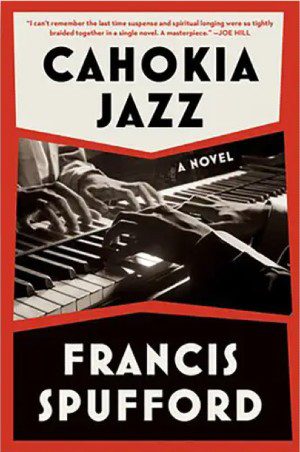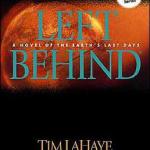The first time I heard the Frank Gaebelein story* was from his daughter, Gretchen Gaebelein Hull.
She mentioned this during lunch at one of those conferences for Evangelicals for Social Action back in the 1990s where we brought together as many smart, respectable white evangelical academics as we could find to work on some declaration or statement or manifesto that we hoped would, at last, bring revival and wake the sleeping giant of white American Christianity to bring about a more just society.
I don’t remember which statement or manifesto this particular conference produced, but I do remember her saying this: “You know my father went to Selma to report on the march for Christianity Today, but once he saw what was happening, and why, he stopped being a reporter and joined the march.”
I didn’t hear a longer version of that story until many years later. I learned about the parts Gretchen had tactfully omitted when reading Peter G. Heltzel’s Jesus & Justice: Evangelicals, Race, and American Politics. I’ve described Heltzel’s telling of this story as “Five sentences that contain the entire history and explanation of white evangelicalism in America.” Here, again, are those five sentences:
In 1965 [Carl] Henry sent Frank E. Gaebelein to cover the march in Selma, Alabama. An associate editor of Christianity Today and the founder and headmaster of the Stony Brook School, New York, Gaebelein went to Selma and was so inspired that he wired Henry in Washington, DC, that evangelicals needed to join the march. But Gaebelein’s stories of the Selma march never saw the light of day. The resistance at Christianity Today was coming primarily from two people: J. Howard Pew, the Texas oil man and the financer of Christianity Today, and L. Nelson Bell, Billy Graham’s father-in-law and an editorial adviser at Christianity Today, who still had segregationist views. Pew and Bell did not want Christianity Today to speak out too critically against racism and capitalism, because they thought it would alienate important segments of the magazine’s constituency.
As I wrote in the post linked above: “Henry did publish Gaebelein’s initial report from Selma, which ran in CT on April 9, 1965. Pew and Bell weren’t wrong — it did, indeed, alienate important segments of the magazine’s constituency. Gaebelein’s subsequent reporting was censored, so he took off his reporter’s hat and joined the marchers, participating in further demonstrations and voter-registration drives.”
 Reading and writing about this today, nearly 60 years later, it can be difficult to appreciate how all of this must have seemed at that time to men like Henry and Gaebelein. We have the benefit of knowing that Selma would be a pivotal moment in the Civil Rights Movement and thus a turning point in American history that would be included in history books — and later banned from them — for generations to come. We know Martin Luther King Jr. as a towering figure commemorated in a national monument and a national holiday, but at the time he was just a young preacher advocating for changes that had barely begun.
Reading and writing about this today, nearly 60 years later, it can be difficult to appreciate how all of this must have seemed at that time to men like Henry and Gaebelein. We have the benefit of knowing that Selma would be a pivotal moment in the Civil Rights Movement and thus a turning point in American history that would be included in history books — and later banned from them — for generations to come. We know Martin Luther King Jr. as a towering figure commemorated in a national monument and a national holiday, but at the time he was just a young preacher advocating for changes that had barely begun.
Carl F.H. Henry and Frank Gaebelein were important, influential men. Both were key figures in the “new evangelical” or “Neo-evangelical” movement that was reinventing fundamentalism. They were among the most prominent scholars and theologians of that movement, men who provided the ballast of substance to the celebrity sizzle of that exploding movement’s superstar, Billy Graham. Both of these men were both Bible scholars and Bible Christians. They had spent their lives studying the Bible and they knew it intimately, both professionally and personally.
Try to imagine what it must have been like for such men to hear the words and the language of that Bible — of their Bible — echoed in the Bible-soaked rhetoric of King and all of the other great preacher-activists of the Civil Rights Movement. Here were the same words they knew inside and out, backwards and forwards, but in a radically different context from anything they’d previously heard or been prepared to hear. For the relentlessly biblical preachers of the Civil Rights Movement, those familiar words seemed to have a different meaning, a larger meaning aglow with a fire that men like Henry and Gaebelein had no context for understanding.
It must have been confusing, and compelling, to hear those familiar words in such a new and unfamiliar way. They needed to hear more. They needed to get to the bottom of this because, after all, this was the Bible, and nothing was more important to them than that.
Keep in mind also that since its earliest days in the late 1950s, Henry’s magazine had been regularly publishing essays by J. Edgar Hoover in which the FBI director warned against the civil rights preachers as Communist agents or, at best, Communist dupes. Those essays had titles like “Faith of Our Fathers” and “Communism: The Bitter Enemy of Religion.” And they were popular with Christianity Today’s readers.
Look again at Brian K. Ballard’s survey of “Dr. Martin Luther King’s Life in Christianity Today Magazine.” The magazine had almost nothing good to say about him during his lifetime. Henry was unprepared for hearing such a figure from so far outside of his own world quoting scripture and expounding on it. He must have been “astonished at his doctrine. For he taught as one having authority, and not as the scribes.”
So Selma came as a test. Frank Gaebelein passed that test. Carl Henry failed it. They arrived at the same crossroads and turned in opposite directions, with Henry taking Christianity Today and the whole of the new, evangelical, “New Evangelical” movement with him. Well, sort of.
Such “crossroads” moments don’t really work like that in history or in life. The thing about “Choose this day whom you will serve” is that it’s a choice we make every day, and also a choice that’s shaped by all the choices we made in the days before. As I wrote here years ago about one such crossroads for a hypothetical friend named Jackie: “When it comes to it, this kind of moral crossroads is rarely experienced as a difficult dilemma. A choice must be made, but that choice will almost always be based on the kind of person making it — based on the character and habits and practice that have shaped that person up until this moment of choosing.”
That was true for Carl Henry and for Frank Gaebelein, and it was also true for J. Edgar Hoover and for J. Howard Pew and L. Nelson Bell and for “the whole of the new, evangelical, ‘New Evangelical’ movement.” So even if Henry himself had passed this test personally, I rather doubt that the character and habits and practice that had shaped white evangelicalism up until that moment would have allowed the rest of Christianity Today or very many other white evangelicals to follow his example any more than they were able to follow Gaebelein’s.
I still enjoy the tantalizing fantasy of moments like this one as hinges of history, “turning points” that break the timeline into divergent universes. We can imagine such a universe or alternate history — something like The Yiddish Policemen’s Union or Cahokia Jazz — dreaming of a world in which rather than opposing the Civil Rights Movement, licking their wounds for a decade, and then spending the next 40 years at the forefront of the white backlash, white evangelical Christians had chosen instead to embrace justice for their neighbors and King’s vision of the beloved community. Nothing in that universe would be the same as anything in ours.**
Such alternate history fantasies can be more than just enjoyable, escapist fun. As Chabon’s and Spufford’s novels show us, their alternative world-building can illuminate the connections, causes, and effects that shape our lives here in this timeline and this reality. The intricacy and contingency of all of that can provide insight, but it also reminds us that the pleasant fantasy of dramatic turning p0ints is often nothing more than another version of the “wake the sleeping giant” pipe-dream we spent all those years chasing at Evangelicals for Social Action.
Jim Guth is another white evangelical scholar I met back in the ’90s at one of ESA’s attempts to rouse that sleeping giant. Guth is a social scientist who has spent decades closely studying the views and dynamics of white evangelical Christianity in America. He knows his stuff.
Earlier this year, Paul Campos linked to Guth’s 2018 analysis of “populism” among white evangelical Americans. Dr. Guth’s focus there was on white evangelical support for the convicted felon and adjudicated rapist Donald Trump. Far from seeing that support as a contradiction of white evangelical values, Guth says it’s a good fit:
White evangelicals share with Trump a multitude of attitudes, including his hostility toward immigrants, his Islamophobia, his racism, and nativism, as well as his “political style,” with its nasty politics and assertion of strong, solitary leadership. Indeed, Trump’s candidacy may have “authorized” for the first time the widespread expression of such attitudes.
I really do think this can all be traced back to white evangelicals’ moral failure at Selma, but they didn’t so much “choose that day whom they would serve” as just continued choosing according to the habits and values and character that were already ingrained in them from the earlier moral failure of slavery. Against that long history of choosing every day whom they would serve, I doubt there was anything that one man or one magazine could have done in 1965 to alter the timeline that has brought us white evangelical worship of a convicted felon.
Guth doubts this too. Any white evangelical leader who dares to lead in any other direction, he says, will wind up as a “leader” without followers:
The pervasive populism of white evangelical laity not only helps explain their support for President Trump, but suggests powerful barriers to influence by “cosmopolitan internationalist” evangelical elites, who want to turn the community in a different direction. As hostile responses to efforts of anti-populist evangelicals like Michael Gerson, Russell Moore, David Platt and many others indicate, there is currently a very limited market for such alternative perspectives among the rank and file. Indeed, the vocal populism of many of the conservative evangelicals filling President Trump’s religious advisory council is probably more representative of the community as a whole.
… Nor does cosmopolitan or cooperative internationalism find much purchase among local evangelical clergy. Analysis of the 2017 Cooperative Clergy Survey shows that ministers from several Evangelical denominations, especially the large Southern Baptist Convention and Assemblies of God, exhibit exactly the same populist traits seen here in white Evangelical laity, but in more pronounced form: strong Islamophobia, Christian nationalism, extreme moral traditionalism, opposition to trade pacts, militaristic attitudes, resistance to political compromise, and climate change denial, among others.
That conspiratorial, antisemitic language about “cosmopolitan internationalist elites”*** is Guth quoting the white evangelicals he’s studying here, not his embracing it himself. It’s a measure of how far we haven’t come since back in the days when Christianity Today was running J. Edgar Hoover’s dire warnings against the cosmopolitan international Communist elites trying to undermine America through the Civil Rights Movement.
The overwhelming majority of white evangelicals in 1965 were not like Frank Gaebelein. And if Carl Henry had tried to become what Gaebelein became, or to make his magazine even very slightly more like that, he and his magazine and his entire “Neo-evangelical” rebranding of fundamentalism would’ve been cast aside just like Russell Moore was by the Southern Baptists for his refusal to worship a grifting rapist.
So while it’s dismaying that Carl Henry and Christianity Today failed to choose well when they came to that crossroads in 1965, and that they haven’t chosen very well at any of the countless crossroads since then, there’s still grounds for hope: Every day brings a new crossroads and a new opportunity to choose better this time. You never know.
* I’ve written about this story four or five times over the years, but I’m starting to learn that after 22 years of this blog it’s probably best not to avoid “repeating myself” just because I already wrote about something back in 2009.
** Again, I am not suggesting that the primary defining characteristic of white evangelicals is their racist backlash against the limited gains of Reconstruction/the Civil Rights Movement.
I am suggesting, rather, that the primary defining characteristic of white evangelicals is their desperate desire to invent Satanic baby-killers to whom they can compare themselves in order to reassure themselves that they are good people and arbiters of morality rather than the moral failures they half-recognize that they are due to their ongoing enthusiastic participation in the backlash against the limited gains of Reconstruction/the Civil Rights Movement.
*** Obligatory 30 Rock reference:














